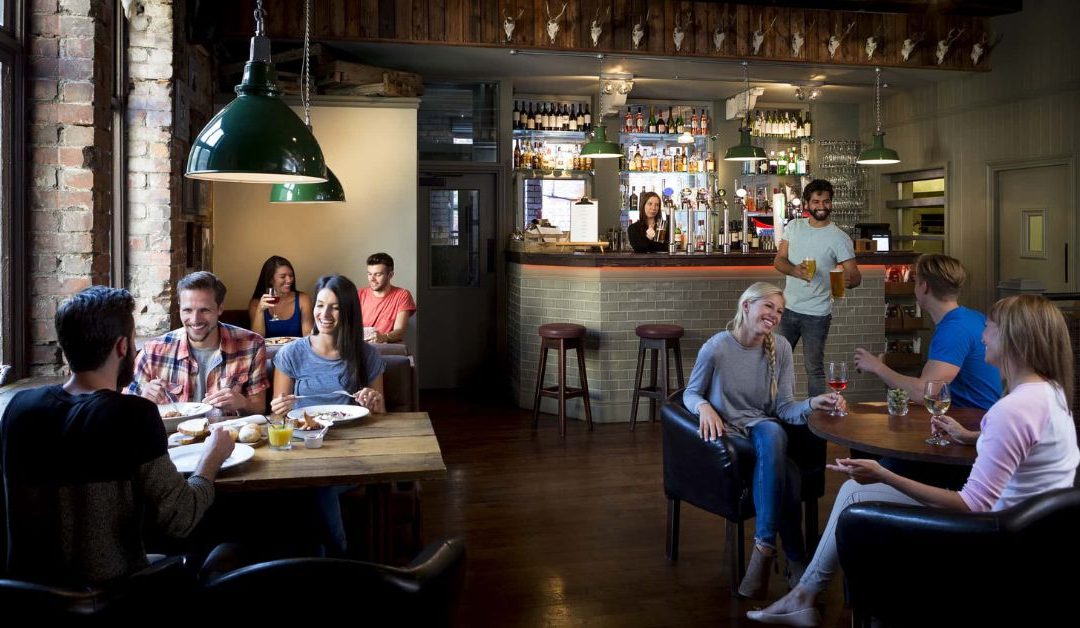
Here’s a fact you probably already know: Your restaurant’s success isn’t just about food. Restaurant convenience is a major concern for guests and the main reason they choose whether or not to visit your establishment. However, maintaining the comfort zone of a restaurant in every season is not as easy as it seems.
Think about your own experience. It probably sounds like this: your customers complain that they are feeling too hot or too cold, or are annoyed by the draft from the air conditioner blowing directly on their food. And work really hard to hold a conversation. At the same time, your kitchen is so hot that people are ready to get out of the heat. Even worse, cooking smells can invade the dining room. Nor is it a pleasant experience for your customers.
Edwin Stipe HVAC & Plumbing has heard stories like this and served many industries including restaurants across the United States over the years. Read on to find out why restaurant convenience is such a tough question. Next, we’ll show you how the right set of specialized equipment and HVAC system design and maintenance can improve room temperature control and solve your problems once and for all.
Why is Restaurant Comfort so Difficult?
The simple answer is this: the restaurant environment makes it more difficult for the traditional HVAC system to provide consistent comfort throughout the restaurant. For instance:
- Buildup of smoke and grease in the ventilation system and HVAC equipment, deteriorating performance.
- Extra heat from kitchen appliances (stoves, grills, ovens, dishwashers) calls for extra cooling during peak hours.
- However, you may need heating in the dining room or in the toilets at the same time. Therefore HVAC systems in restaurants must be flexible enough to simultaneously heat and cool.
- High humidity levels associated with cooking and operating dishwashers make it difficult for HVAC systems to manage restaurant comfort.
What is needed to remedy this situation? It’s a combination of premium HVAC equipment, restaurant-specific HVAC system design, and vigilant preventative maintenance.
Specialized Equipment and Ventilation Designs – Improve the Comfort Of Your Restaurant
For all of the above reasons, the design and implementation of a restaurant HVAC system requires a thorough understanding of the restaurant environment and the types of specialized equipment that provide optimum comfort conditions for the restaurant. Here are some examples:
VRF Systems
VRF systems are a newer HVAC technology that’s popular for providing restaurant comfort. They are designed to solve many of the problems described here. For example, they can provide simultaneous heating and cooling (as well as independently control different zones with different heating and cooling needs). They offer quiet operation, which is also essential for optimal restaurant comfort. They work more efficiently than traditional rooftop or split systems, which means lower energy bills for you.
VRF systems are a newer HVAC technology popular for providing comfort in restaurants. They are designed to solve many of the problems described here. For example:
- They can simultaneously heat and cool (as well as independently control different zones with different heating and cooling needs).
- They ensure silent operation, which is also essential for optimum comfort in restaurants.
- They work more efficiently than traditional rooftop or split systems, which means lower energy bills for you.
Read also: Everything You Should Know about Multi-Zone Heating and Cooling
Design and Equipment of Kitchen Ventilation
The air quality in your kitchen is extremely important, and not only for the health and safety of your employees. Air polluted with smoke, grease and moisture can easily enter your dining room, leading to unpleasant odors and noisy conditions that also affect the comfort of the restaurant for your customers.
To improve the air quality in your kitchen, it is not enough to install a powerful extractor hood. You need to choose the right equipment based on your kitchen layout and the food you cook. In addition, your ventilation design must be well designed to remove stale air and replace it with fresh (conditioned) air and keep the air moving in the right direction.
Make-up Air Systems
Part of good kitchen ventilation is adding make-up air systems specifically designed for restaurants. The make-up air system replaces all the air that is expelled from the kitchen by the extractor systems. Without a make-up air system, you get all kinds of unpleasant and even dangerous conditions that endanger the comfort of the restaurant.
In addition to the odors mentioned above, you may have a negative air pressure situation that causes high velocity air currents, eerie noises, and doors that are difficult to open or close without warning. In the worst cases, drafts can cause high levels of carbon monoxide and volatile organic compounds.
Regulation of the Room Temperature
Room temperature control systems improve air quality by properly conditioning the outdoor air entering your space. These systems are especially useful in humid environments such as a restaurant. The last thing you want is for humid outside air to add to your restaurant’s indoor comfort problems! These systems remove water vapor from the air to improve the comfort of the restaurant. Since many airborne contaminants (such as bacteria and viruses) travel through water vapor, these systems can also help your employees and customers stay healthier.
Never Neglect the Regular Maintenance
In a restaurant environment, even the most efficient new HVAC equipment requires regular maintenance to maintain performance levels. Again, this is due to the extreme conditions you operate in on a daily basis. Grease, soot from smoke and food residues from cooking accumulates in the appliance.
If you’ve ever looked at the vent cover from the inside, you’ll know what we mean. All this debris can build up on system components, leading to increased wear and tear and reduced performance. This leads to a decrease in the convenience of the restaurant.
For example, the fan blades of a grease blower slow down the fan speed, reducing airflow through your system. In addition, dirt that collects on AC coils hinders heat transfer, forcing them to work harder and longer to get the room up to temperature. And rising energy bills in the process.
Last Words
If you’re not sure that your HVAC company has the expertise to solve comfort issues in your restaurant, here’s a reference that can help you find someone else who is: Edwin Stipe HVAC & Plumbing – Voted #1 HVAC Repair Service & Heating Contractor in USA







